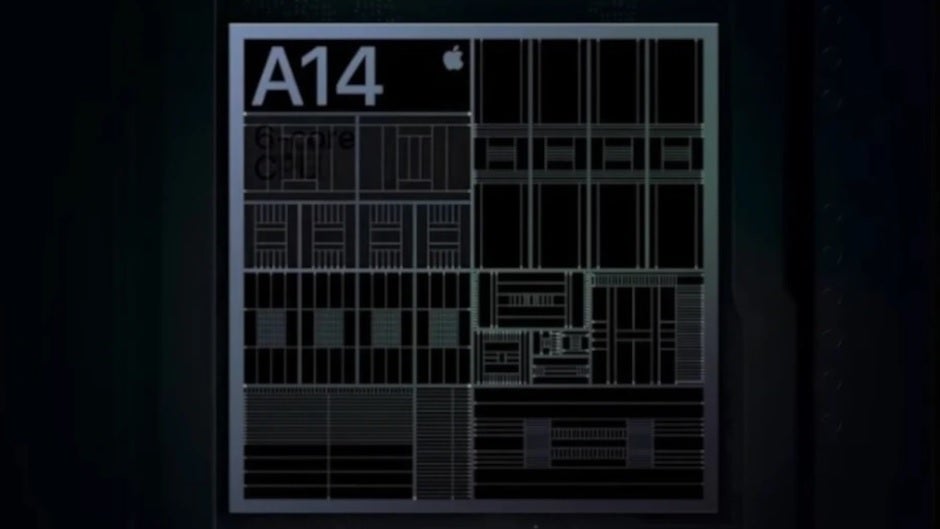Apple reportedly orders more A14 Bionic chips expecting strong demand for the 5G iPhone 13 series

DigiTimes was told by sources that Apple has increased the orders it has placed with TSMC for the newer chips it needs to build more iPhone 13 series phones. The latter uses the 5nm A15 Bionic. At the same time, Apple has reportedly cut back on orders for chips used with older iPhone models. The DigiTimes report says, "Apple has scaled down its chip orders for older-generation iPhones, while ramping up wafer starts at TSMC for its iPhone 13. Apple has also not made any changes to its chip orders placed with TSMC for 2021."
The iPhone 13 line is powered by the A15 Bionic chipset which is built using TSMC's optimized 5nm process node (N5P). Last year's iPhone 12 series used the A14 Bionic SoC which TSMC built using its first-generation 5nm process node known as N5.
The previous chipset, the A13 Bionic used on the iPhone 11 series, was built using TSMC's N7P process node. The transistor count on Apple's last three chips, the A13 Bionic, A14 Bionic, and A15 Bionic, has risen from 8.5 billion to 11.8 billion, to 15 billion respectively. The higher the number of transistors found inside a chip, the more powerful and energy-efficient that chip is.

Render of the iPhone 14 Pro variant with flush camera module
The news can be taken as a sign that Apple expects to ship more iPhone 13 series units than originally thought. You might recall that Gene Munster of Loup Ventures said that there are 400 million active iPhone units that are three years of age or older. With some carriers offering a decent discount on the iPhone 13 line with a trade, this could be the year that a large percentage of those 400 million units are finally upgraded.
A report from the Taiwan News says that COVID-based supply chain delays in Vietnam are pushing back delivery dates for the new 2021 iPhone models. That's because these delays are affecting the receipt by Apple of components used on the camera modules of all four iPhone 13 variants.
Not too many companies can get away with increasing the size of their chip orders in the middle of a major chip shortage. But Apple is TSMC's largest customer and is believed to account for 20% of the foundry's revenue (but less than 20% of its profits). As a result, despite the current shortage, Apple gets what it asks for and with a smaller price increase to boot.
Reportedly, while other TSMC customers like MediaTek, AMD, Nvidia, and Intel might be paying as much as 20% more for their chips next year, Apple is getting away with only a 3% price hike.
It might seem silly to look ahead at the iPhone 14 line considering that the iPhone 13 has just been released. Considering that the amount of preparation a foundry like TSMC must go through in advance to build smartphone chips, we already know that the complexity of building a 3nm chip has forced TSMC to delay the release of chips using that node. Instead, next year's iPhone will be powered by the 4nm A16 Bionic and with any luck, in 2023 we will see the 3nm A17 Bionic running the iPhone 15 line.
We also expect four models next year including the 6.1-inch iPhone 14, the 6.7-inch iPhone 14 Max, the 6.1-inch iPhone 14 Pro and the 6.7-inch iPhone 14 Pro Max. Bloomberg's Mark Gurman says that next year's iPhone 14 line will feature a complete redesign which could mean the end of the notch. TF International's crystal ball-carrying analyst Ming-Chi Kuo says that the notch will be replaced by a hole-punch camera on the iPhone 14.
Another interesting rumor suggests that the rear camera bump will go down like a wart covered with Compound W. The iPhone 14 render posted by Jon Prosser shows that the camera module will be flush with the back panel which means that next year's iPhone variants might be able to lie flat on a table, screen-side up.
Follow us on Google News












Things that are NOT allowed:
To help keep our community safe and free from spam, we apply temporary limits to newly created accounts: